In northwestern Saudi Arabia, there is a town called AlUla, which has the roughest surface landscape - a wild desert and coarse and strangely shaped rock and sand mountains.
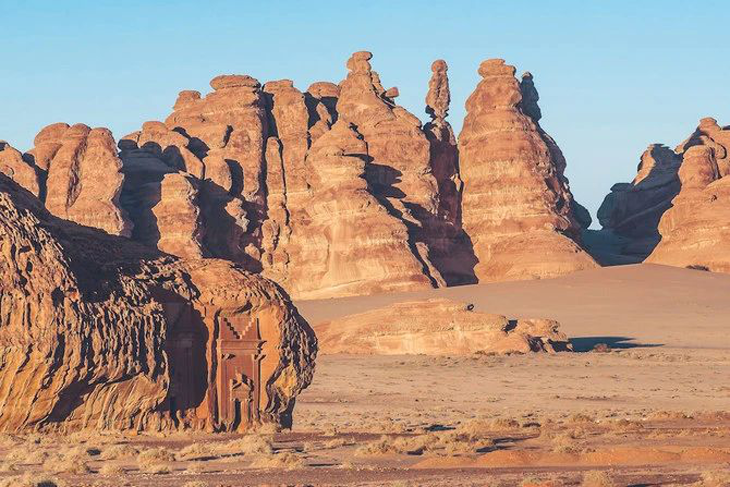
Far from the city and sparsely populated, AlUla seems to be a place that existed only in the ancient Arabian mythology "One Thousand and One Nights", with a strong Middle Eastern mystery.
As if stepping into this land, it will automatically disappear in the vast desert.
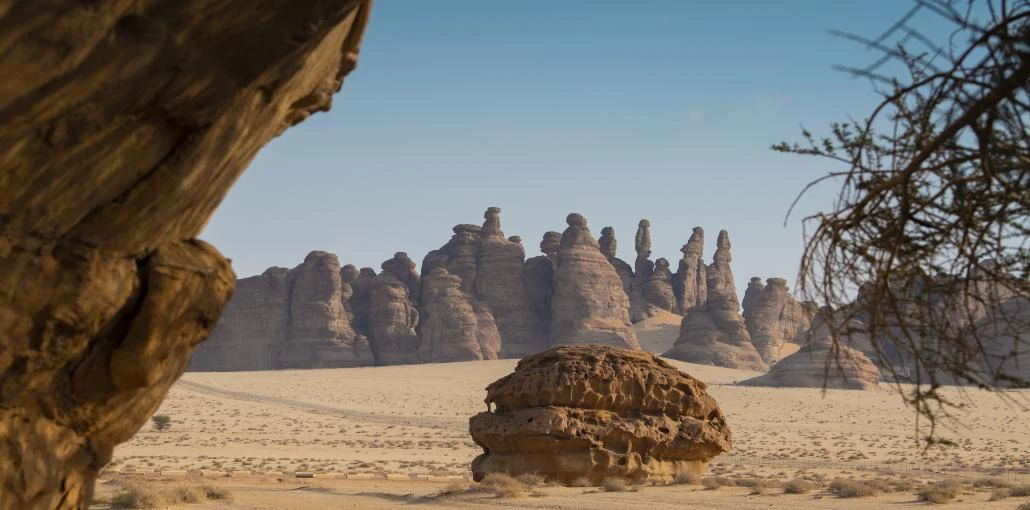 Or slowly swallowed by the blazing sun.
Or slowly swallowed by the blazing sun.
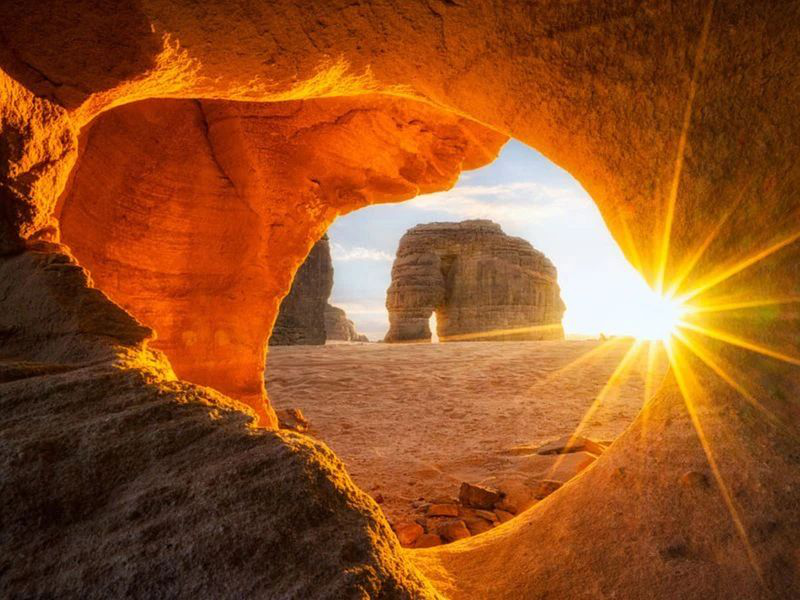
In short, this is a "do not approach" forbidden place.
However, recently, this place has suddenly become a big hit on the Internet, attracting countless people to go, why? Because a very amazing hotel is about to open here - Sharaan Hotel.
The hotel, which will be opened in a few years, is located in the heart of AlUla, and the whole hotel uses the landscape of AlUla itself as its facade, so if you just look at it from the outside, you won't find a hotel here.
But when you turn on the God view, you will definitely have a feeling of discovering a new underground world:
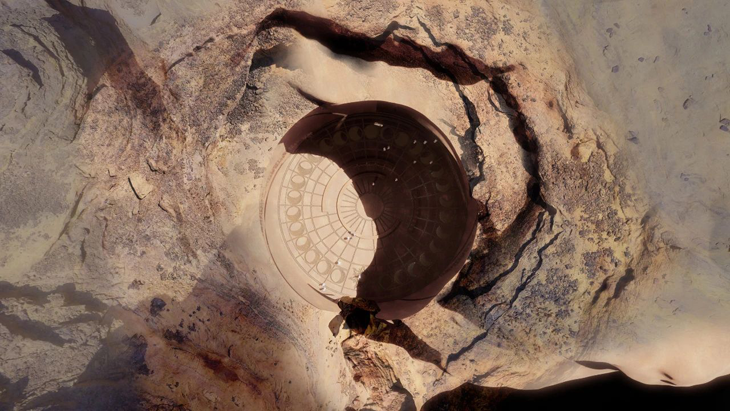
Designed by French architect Jean Nouvel, the underground hotel is approximately 80 meters deep, with 40 rooms, 3 resort villas, and 14 private pavilions evenly distributed around a central elevator shaft.
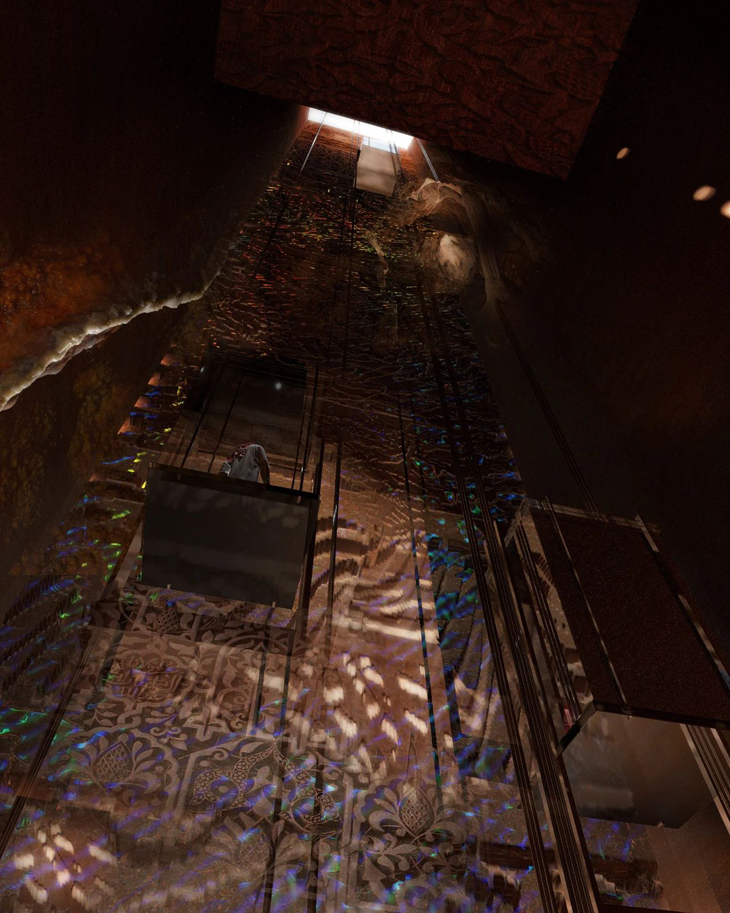
Everything, everything is very modern, but these modern is you do not enter the hotel can not feel the authentic, because the entire hotel is embedded in the rock interior, from the outside, this is simply "wild animals live in the place", but also the kind of live rough wild animals.
After all, this kind of unpolished rock and sand mountain really makes people have no desire to live here.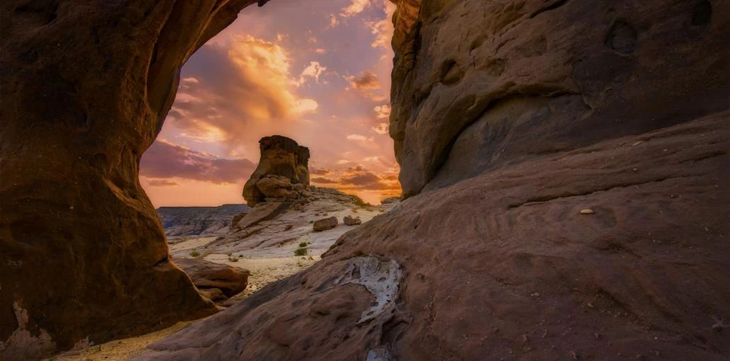 Of course, except for this hotel.
Of course, except for this hotel.
Entering the underground square of the hotel, you will find that the original granularity of the rock has suddenly become delicate and smooth, as if the sunlight shining down has become much more delicate:.
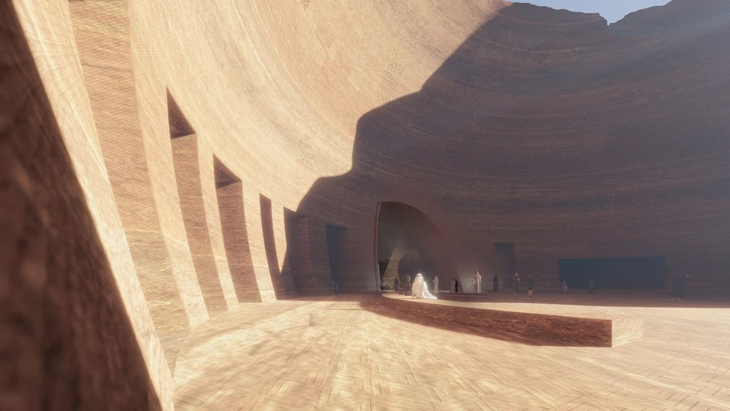
The lobby is simple and atmospheric, without losing the sense of high class, with the unique pattern of the roof is a different kind of Middle Eastern style.
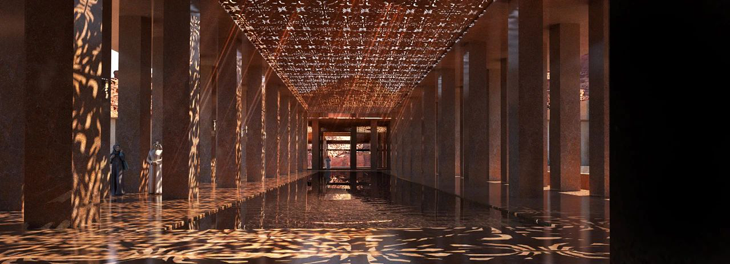
It was a wonderful feeling to follow the robed man who was "rich by his clothes" into the elevator room and see the natural rock-sand mountain outside through the elevator with glass on all sides, as if it was a picture only in a science fiction movie.
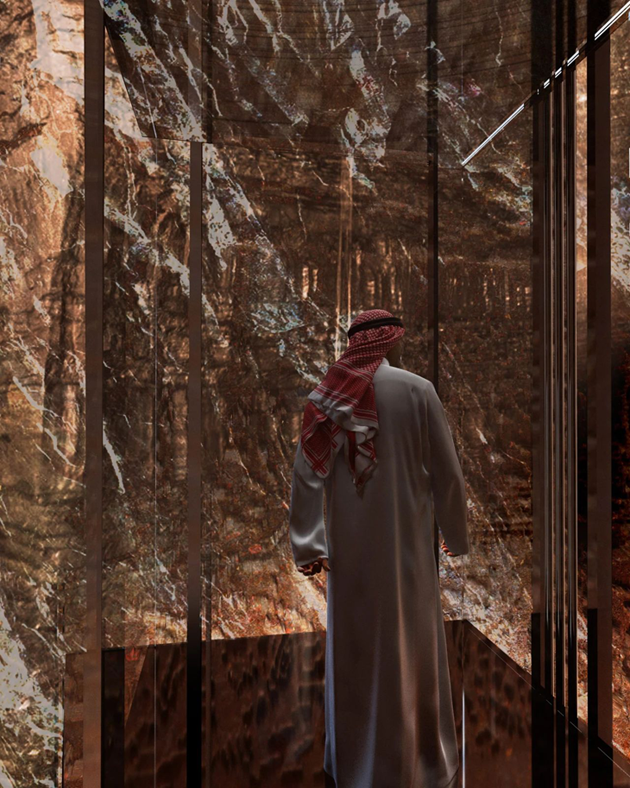
If I could stay in a guest room here, this feeling of being detached from the real world would be even stronger.
"I'm obviously in the richest Saudi Arabia in the world, I'm obviously staying in one of the most luxurious grand hotels, and I'm obviously surrounded by the most advanced high-tech products, but why do I always have the feeling that I've crossed over to a Middle Eastern mythology?"
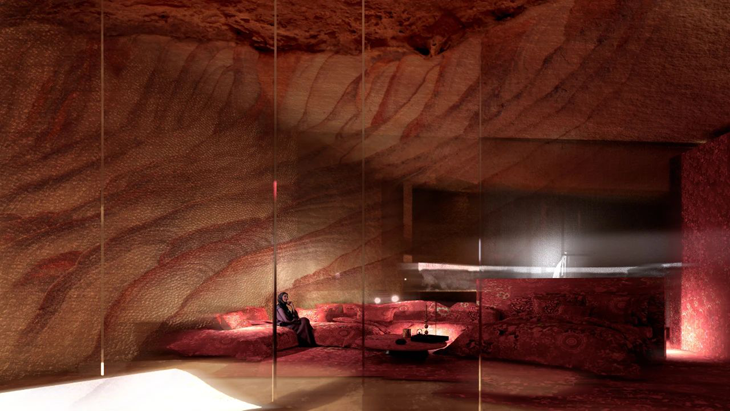
The combination of high-tech facilities and the surrounding unpolished rock-sand walls and ceilings is at once contradictory and indescribably harmonious.
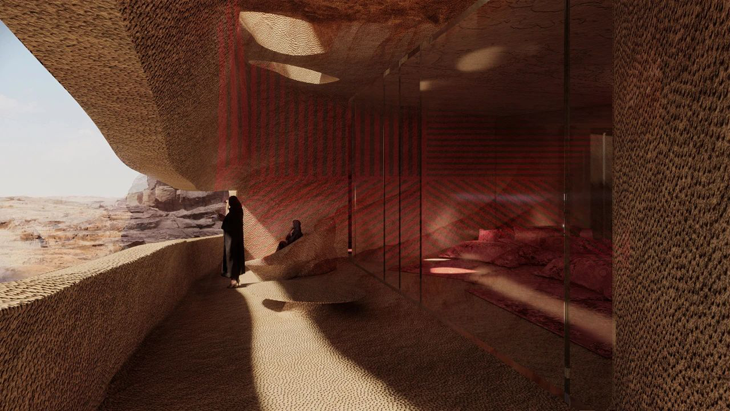
Imagine that you are woken up by the artificial intelligence alarm clock at the bedside in the early morning, the curtains of the automatic sensor slowly pull open, but what appears in front of you is a rock wall carved with ancient Arabic writing, and a waiter dressed in traditional Arabian robes ......
High-tech and traditional culture collide to produce a sense of impact absolutely let people experience once can not be forgotten.
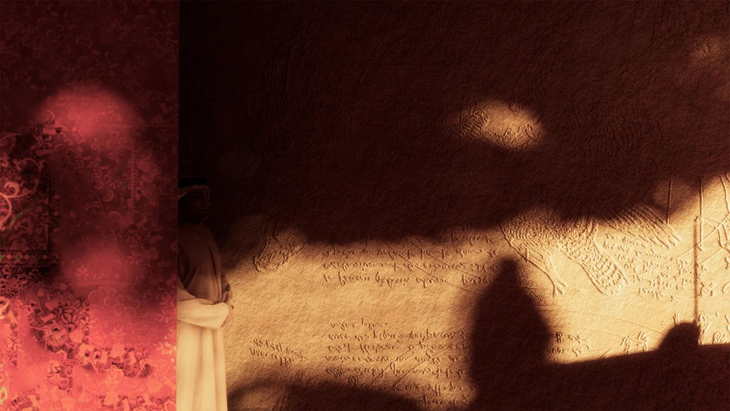
In addition to the interior of the rooms, including the balcony and other places can be said to be "natural", the original landscape here is what it is, so the balcony of the rooms you live in may have a very good view is very wide, a glance can be seen through the desert straight kind of smoke:.
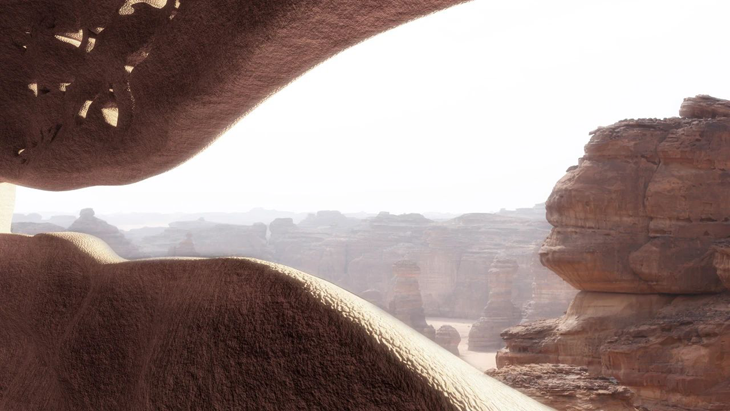
But it is also possible to get a glimpse of the world outside the hotel only through a partial gap in the original mountain, depending on the mountain range itself on which the hotel is located.
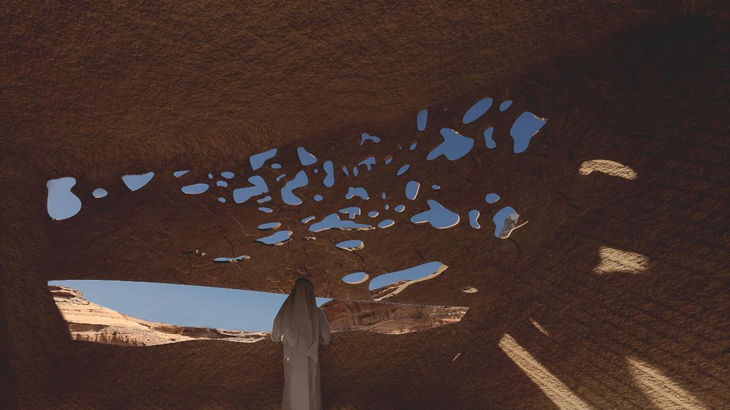 Every detail and every corner here seems to be telling the history of Saudi Arabia and even the whole Middle East to the people who come and go. In this wonderful environment, a bath in the hotel can be a feeling of traveling to the "Aladdin" cartoon, as if the next second your pet - a big tiger or a big lion will appear beside you.
Every detail and every corner here seems to be telling the history of Saudi Arabia and even the whole Middle East to the people who come and go. In this wonderful environment, a bath in the hotel can be a feeling of traveling to the "Aladdin" cartoon, as if the next second your pet - a big tiger or a big lion will appear beside you.
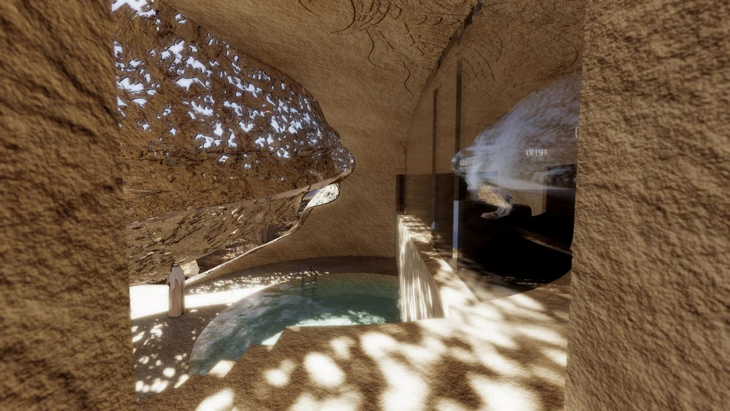
The original walls are mapped with Arabesque patterns, and the hot golden sunlight only found in the desert landscape enters the room piece by piece through the mountain.
It feels like you are living in the cave of treasure in Ali Baba and the Forty Thieves, where you need to shout sesame to open the door.
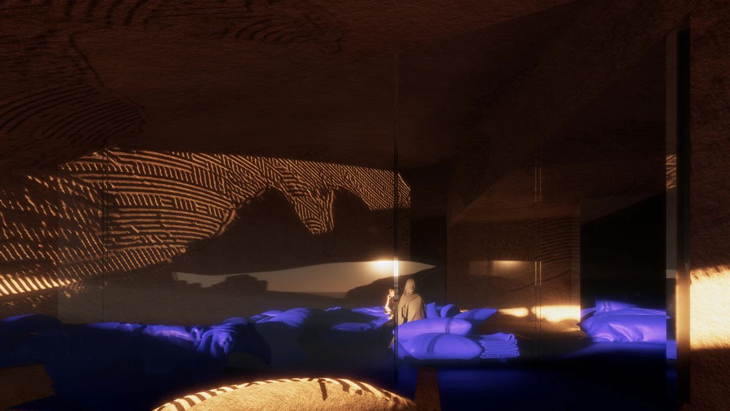 Although the hotel has not yet been officially completed, the pictures released to the public are also some renderings, but it does not affect people's curiosity and desire for this hotel.
Although the hotel has not yet been officially completed, the pictures released to the public are also some renderings, but it does not affect people's curiosity and desire for this hotel.
Some of the most famous media in the architectural industry, including dezeen, ArchDaily and so on, have devoted a lot of space to this amazing hotel.
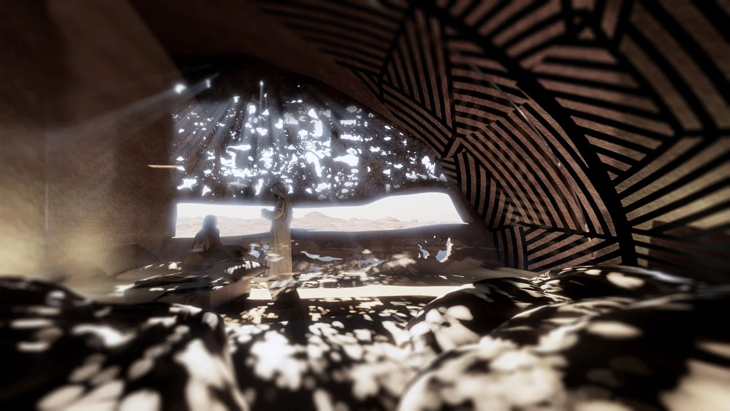
Of course, the unique design sense is definitely an important part of the reason why a hotel that has not yet been built has attracted so much attention.
But another point should not be ignored, that is, the design concept worth thinking about.
AlUla is such an undeveloped continent with so much open space, why not just build a big hotel on the ground? Why spend so much effort to make such a "hidden" building inside the mountains?
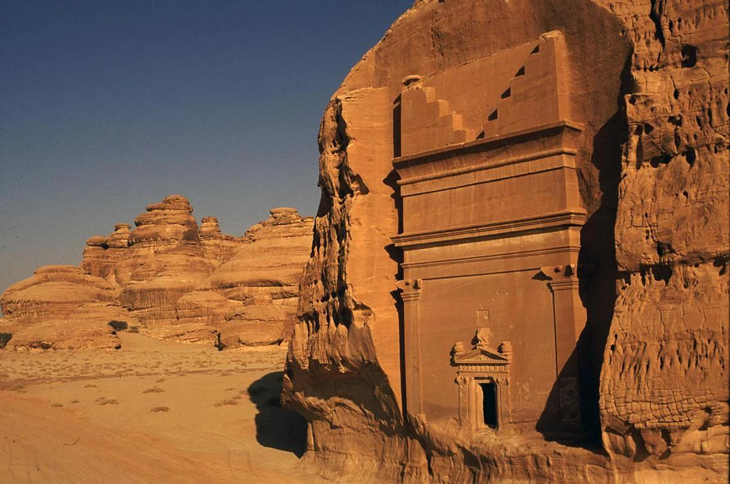
According to architect Jean Nouvel, it was the best balance he could find in choosing the future of the past.
"AlUla is a natural museum. Every gorge and cliff, every dune and every rocky outline, every geological and archaeological site deserves to be examined in detail. We want to preserve as much of its uniqueness and charm as possible, its antiquity. We must keep a little mystery, but also change for the future, AlUla needs a little modernization. Looking to the future is a never-ending obligation that requires us to remember the past while living fully in the present."
In Jean Nouvel's opinion, good architectural design can both "look forward" and "look backward", especially for buildings like this hotel that need to be built in some undeveloped natural environment, how to balance the relationship between design and original ecology is very important.
Without destroying the original appearance of nature, retaining the historical story of the landscape features; but also to bring the new blood from the modern society, this issue has become one of the issues that many architects will consider in recent years.
With the expansion of the human population and the growth of urban areas, the original appearance of the Earth has actually been quietly changed by us, the most intuitive is the crazy growth of various buildings or human activity areas.
Two foreign photographers not long ago released a book entitled "Time Lapse Overview: How We Change the Earth" (How We Change the Earth), which contains 250 satellite and drone photos of changing places on Earth.
Las Vegas, USA, where gray houses gradually swallow up the reddish-brown land of.
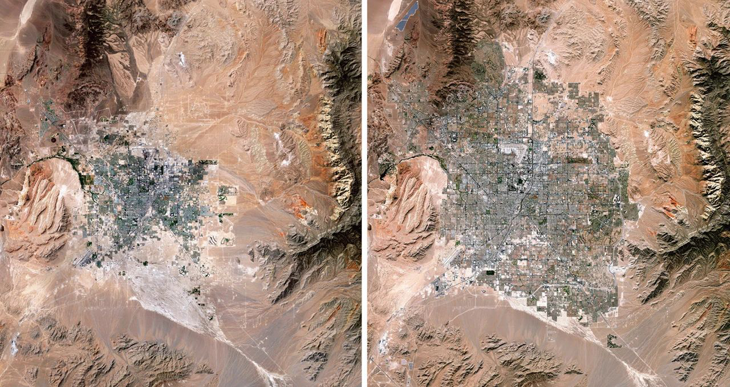
Bolivia's Uyuni salt marshes are no longer the snowy white they once were.
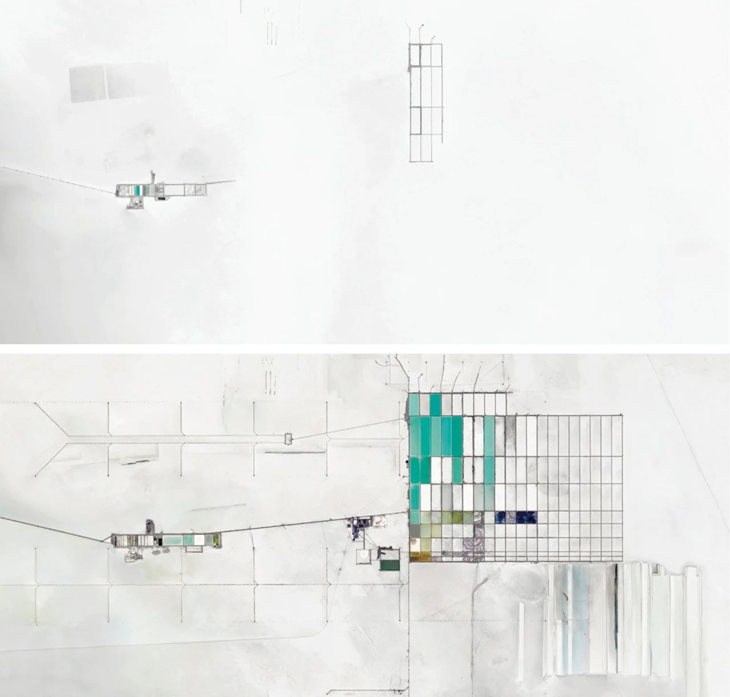 More visually, the hospitals built in Wuhan during the outbreak.
More visually, the hospitals built in Wuhan during the outbreak.
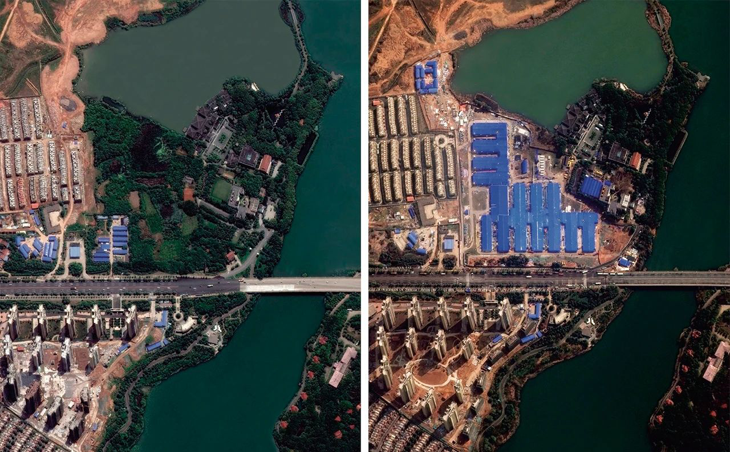
Yes, it is inevitable that cities and human development will bring changes to nature, but with such advanced technology today, what can be done to minimize our harm or change to nature is a question that needs to be seriously considered.
Fortunately, there are more and more designers and architects who are thinking about this issue, just like Jean Nouvel, to make architecture as friendly as possible to nature and to preserve the most of the natural landscape.
Architect Amey Kandalgaonkar wowed the internet some time ago with a building, also in Saudi Arabia, that faced a complex rocky landscape and a spacious house, and instead of removing the rocks, Amey simply "inserted" the whole building into a huge rock.
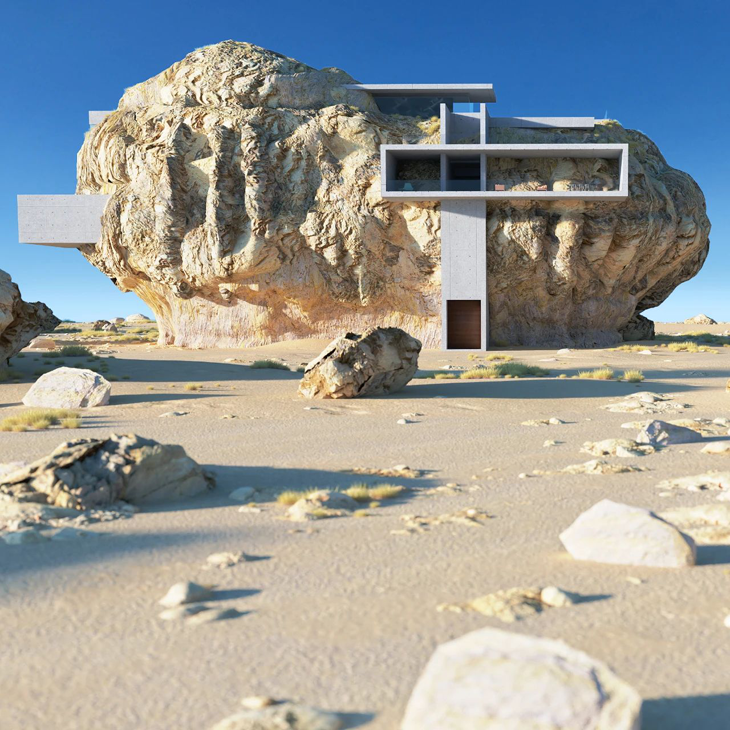
From all angles, the original appearance of the rock has been preserved to a large extent.
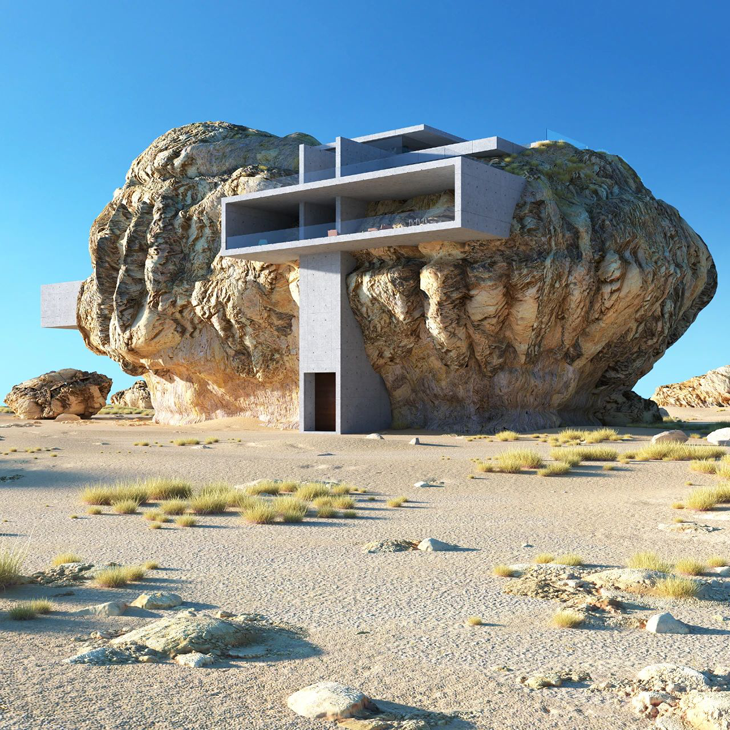
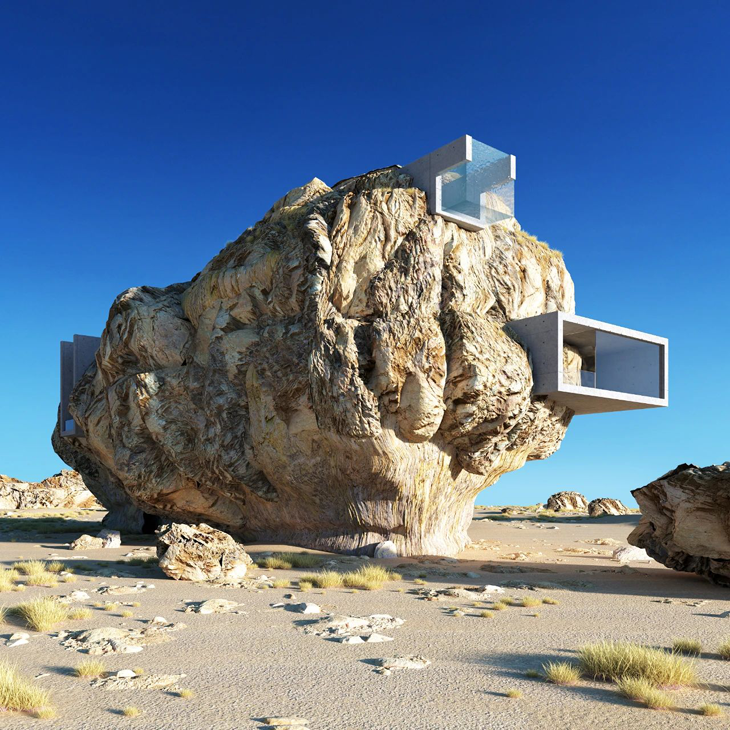
At the same time, the building is not affected by the rocks, and the combination of the two hard and fast is even more interesting, refreshing people's perception of traditional architecture, and even more refreshing for the relationship between architecture & nature.
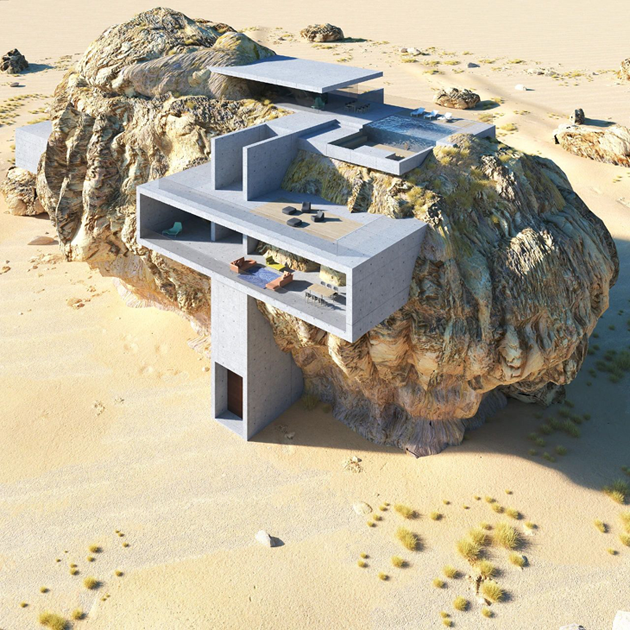
But this building is still in the conceptual design stage, so let's look forward to the day when it's actually built!
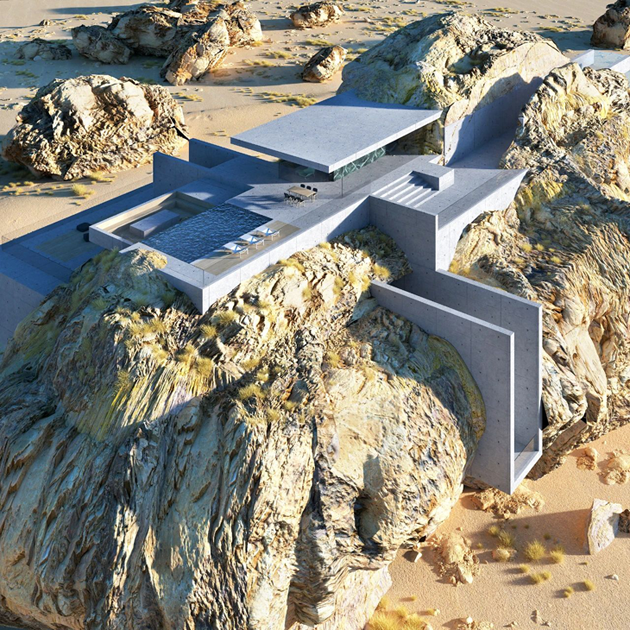
Just as ingenious as this rock house is the following cliff house designed by OPA Architects.
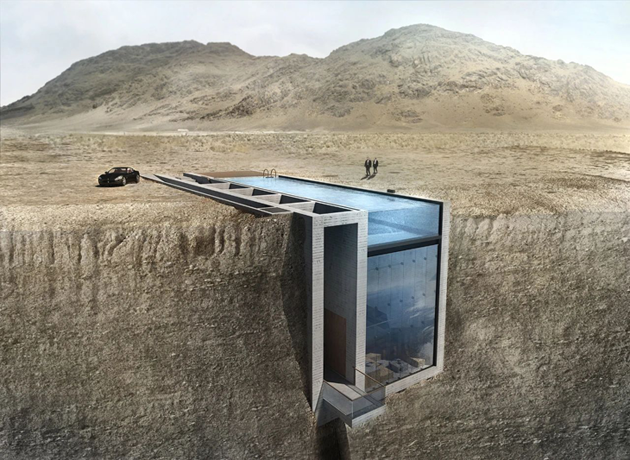
In order to maximize the original ecological appearance, OPA did not choose to erect a building directly on the edge of the cliff, but instead hollowed out a part of the mountain as a space for activities.
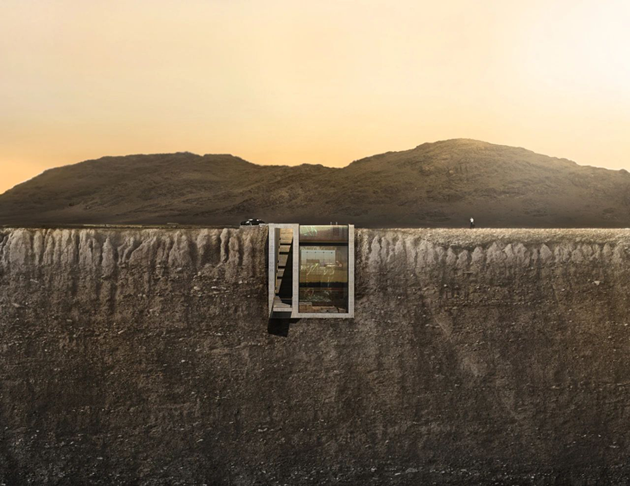
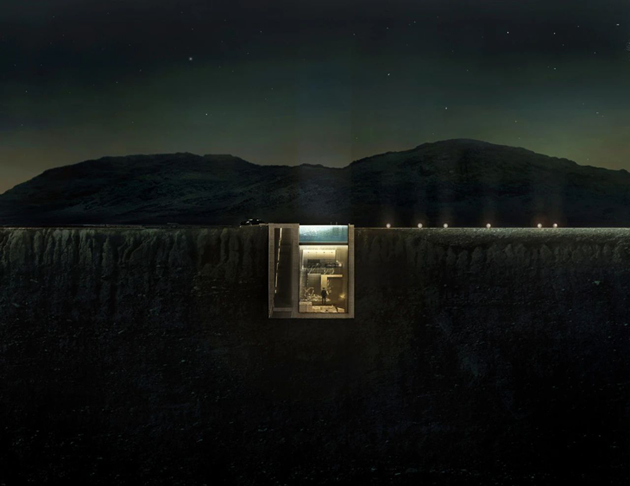
The view from above is not too obtrusive:
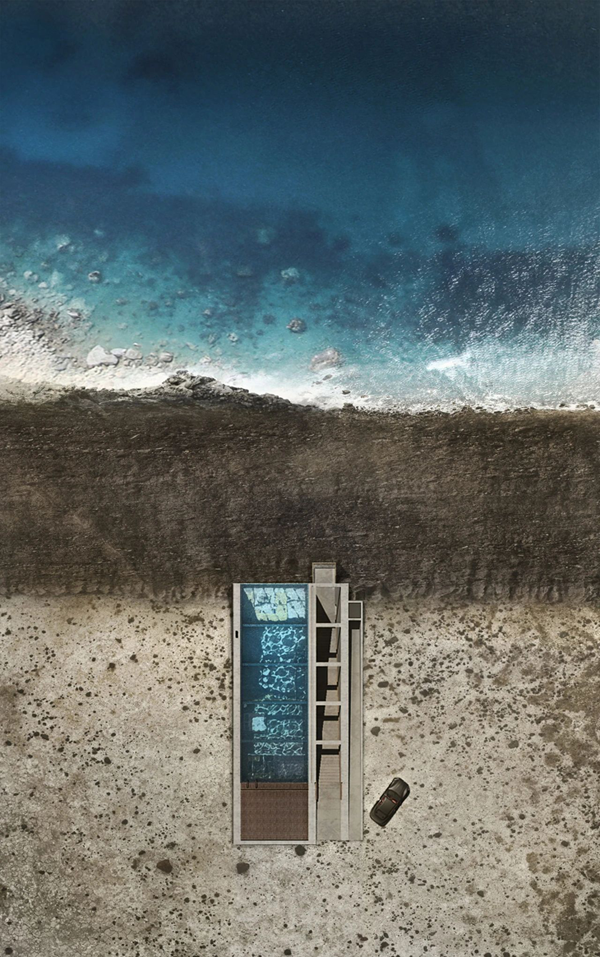
On the one hand, the natural landscape is protected, and on the other hand, sufficient living space is given to human beings.
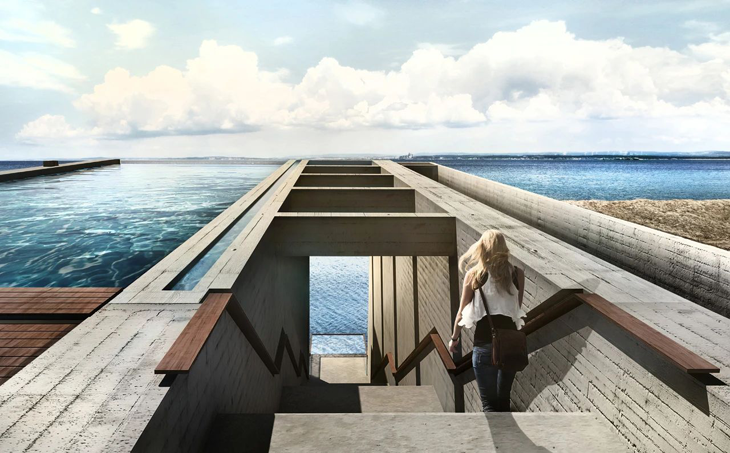
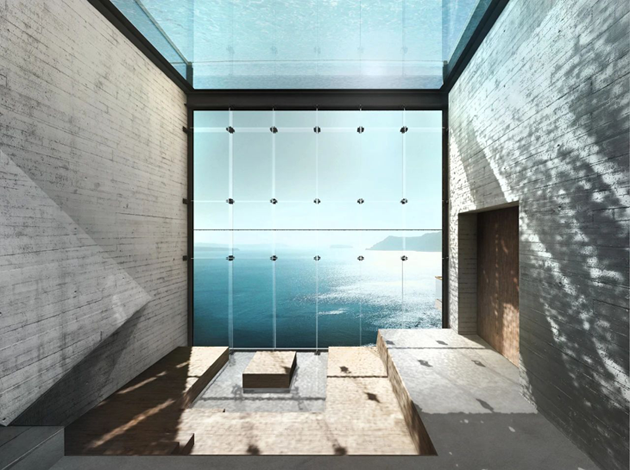
In Córdoba, Spain, there is an estate called Cuevas del Pino, which is located in the foothills of the Morena Mountains, an area of calcareous rocky terrain, many of which are hundreds or thousands of years old.
In order not to destroy the original landscape and at the same time to build a small estate, the "home under the caves" was born.
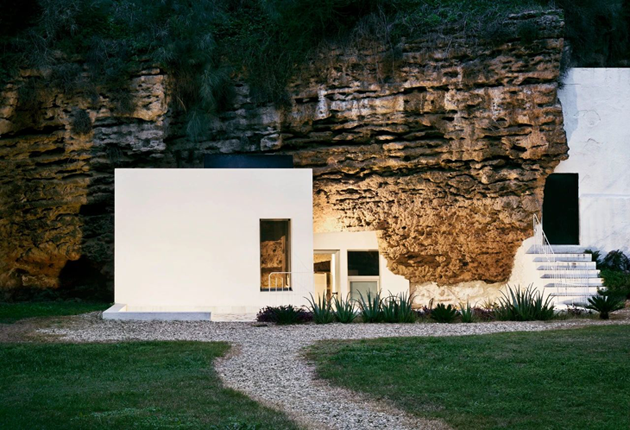
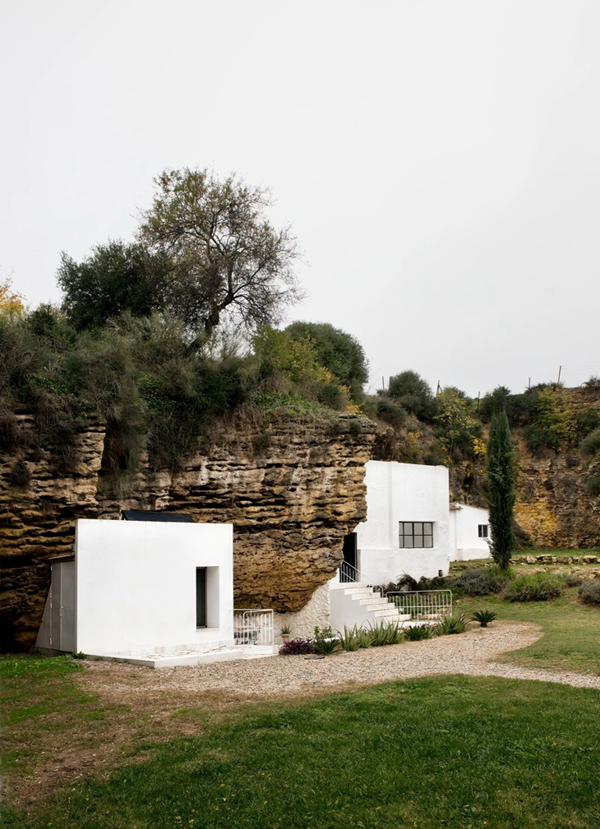
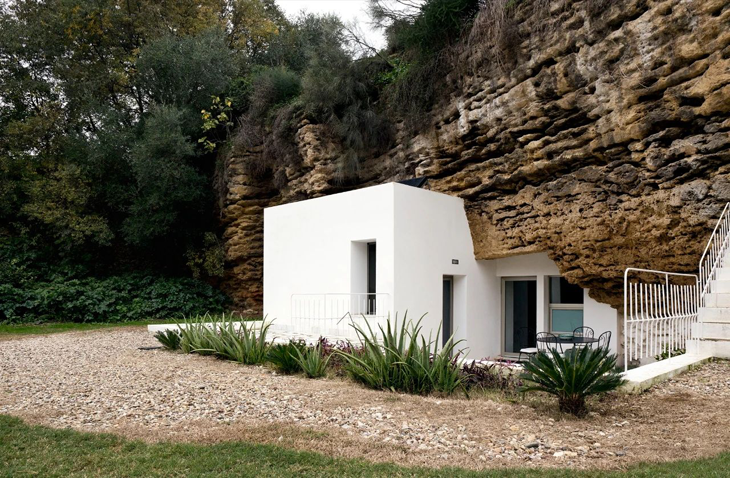
The entire building has barely damaged a bit of the rock, the construction and layout of the house follows the rock, and the interior of the room is a combination of flat white walls and the original rock formations
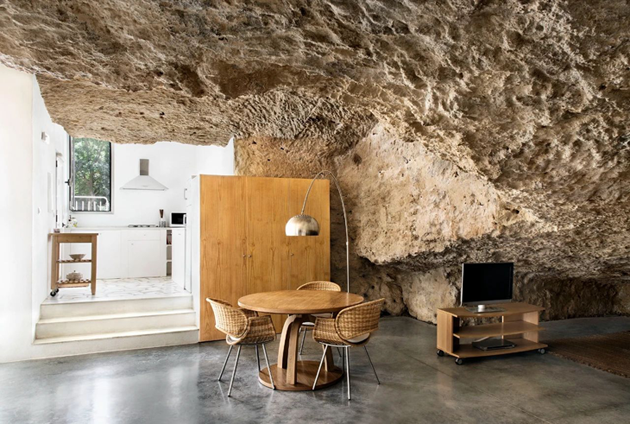
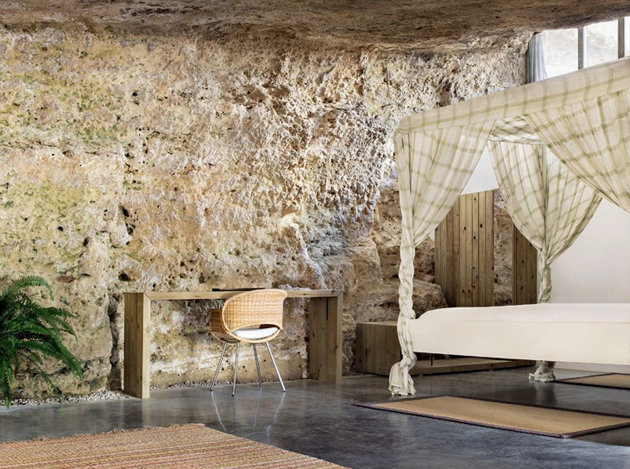
Not only does not contradict, but also has some sense of design:
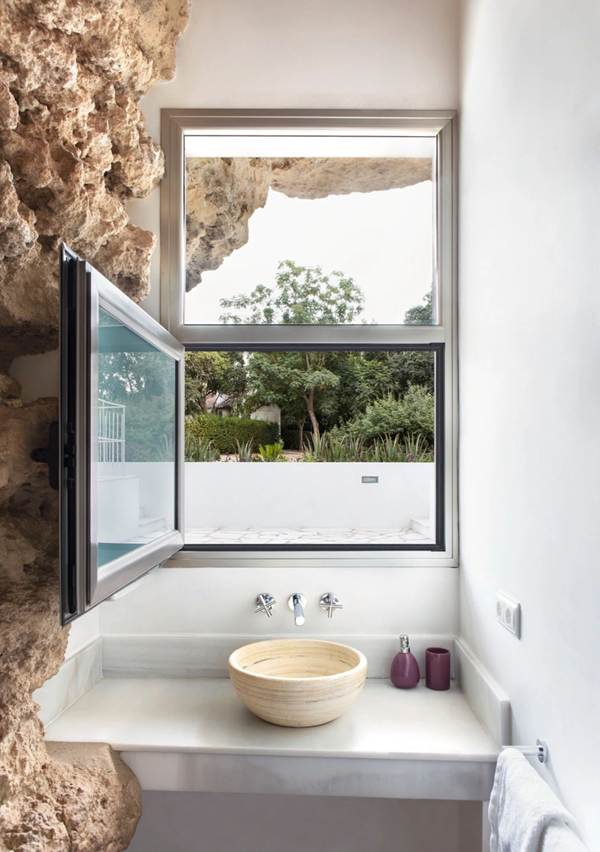
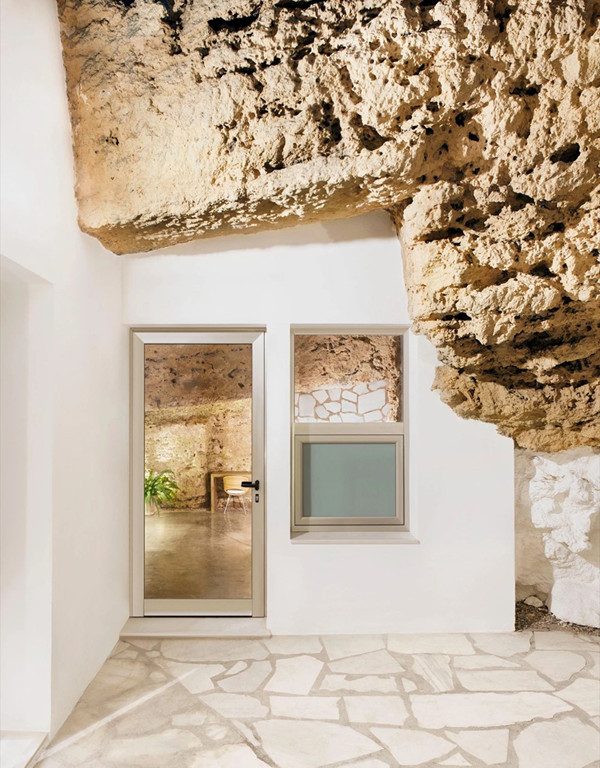
Another example is a building in Colorado, USA, which received a lot of praise on the Internet some time ago with just two photos.
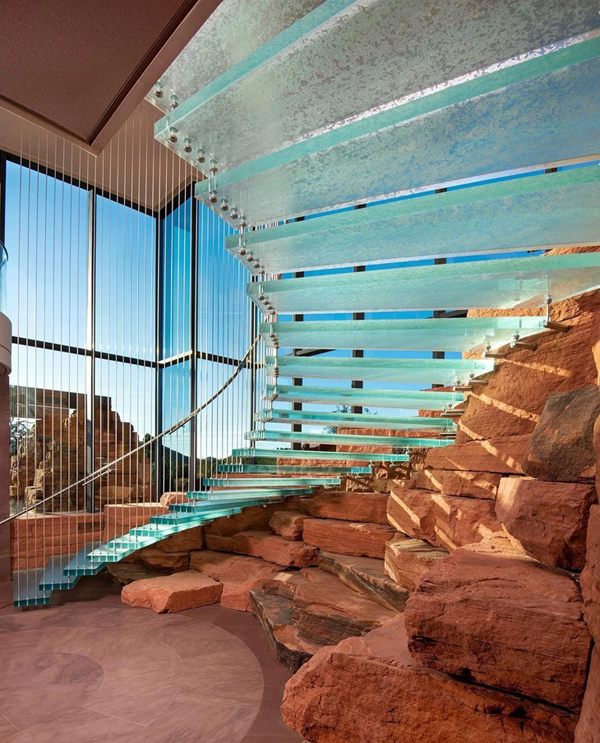
The combination of the original landscape and the modern staircase is remarkable both conceptually and in terms of design.
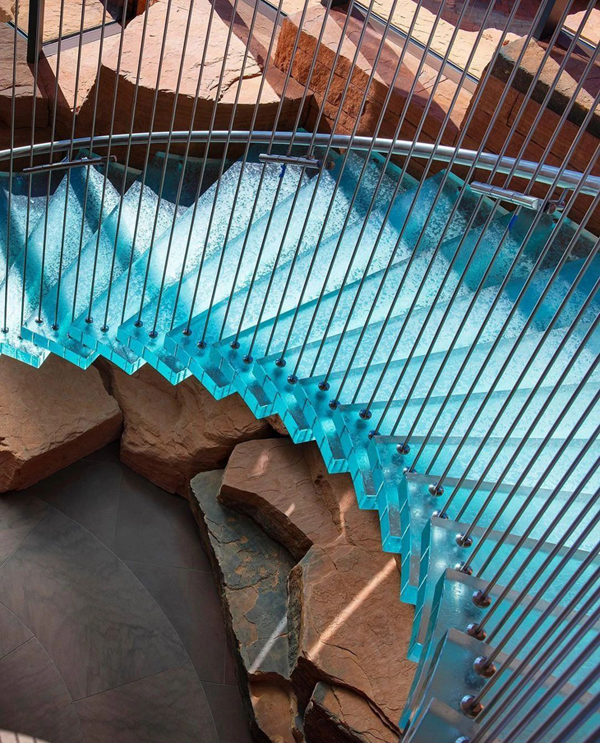
It can be seen that the development of architecture is gradually developing in the direction of "environmental protection", more and more buildings are no longer built bigger and taller as the only requirement, how to reduce the interference with nature, how to protect the original appearance of the location has become a more important matter.
The Earth is warming, the environment is deteriorating, and biodiversity is decreasing ......
The planet we live on may have to face even more problems in the future than it does now, but at least these buildings give us hope and a picture of a future where humans live in friendship with nature.
To conclude with a quote from architect Jean Nouvel: "Our architecture should not endanger those things that are sacred to mankind and to time."